Hyphal Modification in Fungi : In majority of fungi, hyphae are simple. In some advanced fungi, hyphae may undergo certain modification in response to functional needs. Hyphal modifications are hyphal aggregations are required to do specific functions during the life cycle of fungi.
Hyphal Modification in Fungi
Important hyphal modifications in fungi are:
(1). Prosenchyma
(2). Pseudoparechyma
(3). Rhizomorphs (Mycelial cords)
(4). Sclerotium (pl. Sclerotia)
(5). Appressorium (pl. Appressoria)
(6). Haustorium (pl. Haustoria)
(7). Stroma
(8). Snares (hyphal traps)
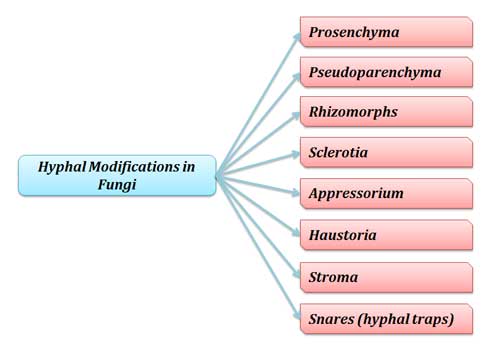
Learn more: Fungi- General Characteristics
(1). Prosenchyma
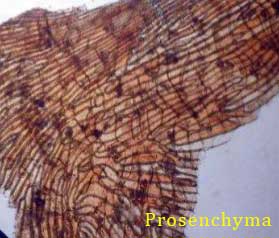 Ø Prosenchyma is formed by the loosely packed tissue like organization of fungi
Ø Prosenchyma is formed by the loosely packed tissue like organization of fungi
Ø Prosenchyma is formed when the component hyphae is arranged more or less parallel to one another and the whole mass become a felt like structure
Ø The hyphae unite to form a loosely interwoven structure
Ø In prosenchyma, the individuality of fungal hyphae is not lost
Ø Prosenchyma is also known as Plectenchyma or Proso-plectenchyma
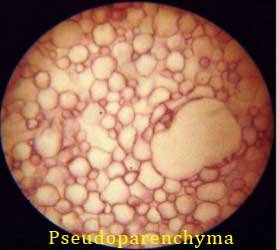 (2). Pseudo-parenchyma
(2). Pseudo-parenchyma
Ø Here hyphae are closely intertwined and forms a tissue like structure in cross section
Ø In pseudo-parenchyma, the hyphae lose their individuality and they are not distinguishable from each other
Ø Pseudo-parenchyma resembles with the parenchyymatous tissue of higher plants in cross section
Ø They are also called as Para-plectenchyma
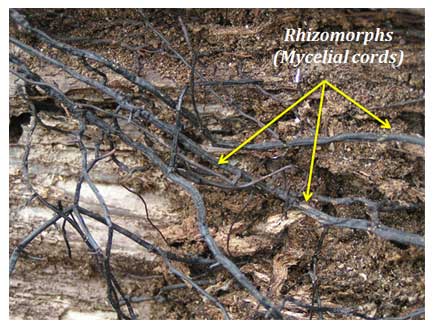
Rhizomorphs (source wikipedia)
(3). Rhizomorphs
Ø Rhizomorphs are thick strands or root like aggregation of somatic hyphae in some fungi
Ø They are also called as mycelial cords
Ø They are gelatinous, dark brown and rope like coiled structures
Ø In rhizomorphs the intertwining of hyphae is too tight so that hyphae loose its individuality
Ø Individual hyphae are arranged in parallel way
Ø Rhizomorphs has higher infection capacity than individual hyphae
Ø They are perennating structures with high penetration capacity
Ø Rhizomorphs survives for many years and they give rise new mycelia in the favourable conditions
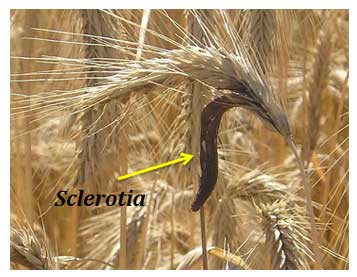
Ergot Sclerotium of Wheat (source wikipedia)
(4). Sclerotium (Sclerotia)
Ø Sclerotia is a compact globose structure formed by the aggregation of hyphae in some fungi
Ø The interwoven hyphae are very much compact so that the individuality of hyphae is lost and the mass become rounded and cushion like structures
Ø Sclerotia survives for long periods, sometimes for many years
Ø They are the resting stage of some fungi
Ø They accumulate food materials and helps in vegetative reproduction
Ø Outer portion of sclerotia become dark brown, while the inner cells are colourless
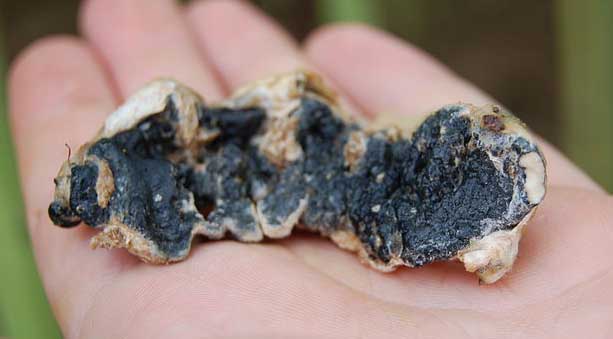
Sclerotium (source wikipedia)
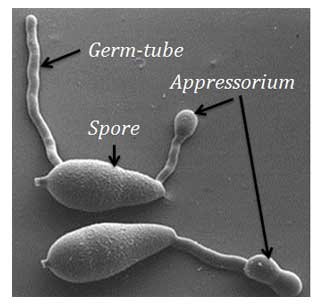
Appressorium
(5). Appressorium (appressoria)
Ø Appressorium is a terminal simple or lobed swollen structure of germ tubes on infecting hyphae
Ø Appressorium is found on many parasitic fungi such as rusts and powdery mildews
Ø It adheres to the surface of host and help in the penetrating of hyphae
Ø The infection peg is originated from the appressorium
(6). Haustorium (Haustoria)
Ø Haustoria are the intracellular absorbing structures of obligate parasites
Ø They are meant for absorbing food materials from the host tissue
Ø The size and shape of haustoria varies
Ø The shape may be knob like, elongated, finger like or branched
Ø They secrete some special enzymes which help in hydrolyzing proteins and carbohydrates of host
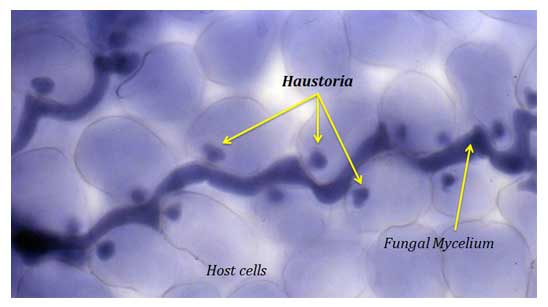
Haustoria (source wikipedia)
(7). Stroma
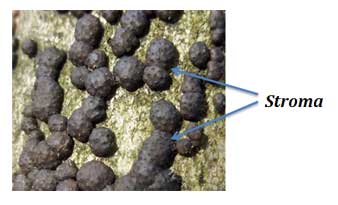 Ø Stroma are compact somatic structures
Ø Stroma are compact somatic structures
Ø They are flat cushion like pseudoparenchymatous structures
Ø Fructifications are usually found on or in them
(8). Snares (Hyphal traps)
Ø Snares are trap like structures produced by predaceous fungi to capture small animals such nematodes and protozons
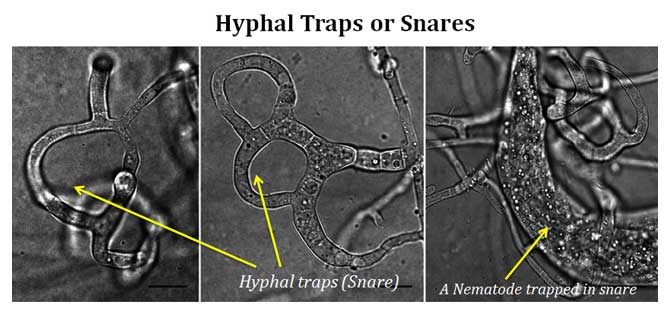
| You may also like... | ||
|---|---|---|
| NOTES | QUESTION BANK | COMPETITIVE EXAMS. |
| PPTs | UNIVERSITY EXAMS | DIFFERENCE BETWEEN.. |
| MCQs | PLUS ONE BIOLOGY | NEWS & JOBS |
| MOCK TESTS | PLUS TWO BIOLOGY | PRACTICAL |
You may also like…
@. Fungi: General Characteristics (key points with PPT)
@. Difference between Oomycetes and True Fungi
@. Difference between Algae and Fungi
@. Hyphal Modifications in Fungi
@. Vegetative Reproduction in Fungi
@. Asexual Reproduction in Fungi
@. Sexual Reproduction in Fungi

Hi i am biology student ….